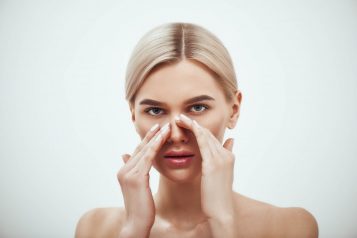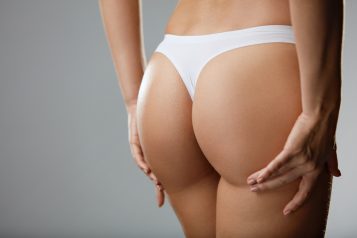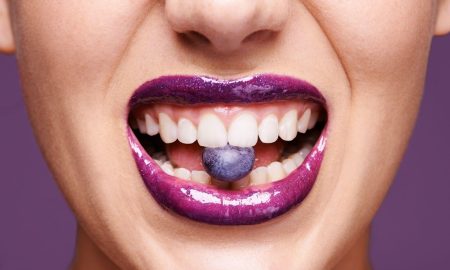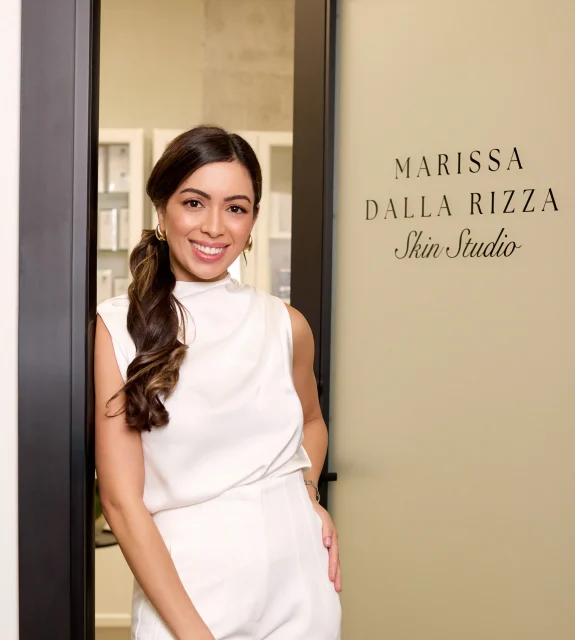Dr. Mark G. Albert, M.D. is a solo practice Aesthetic Plastic & Reconstructive Surgeon on the Upper East Side of Manhattan and Director of the renowned Manhattan Eye, Ear, and Throat Hospital Aesthetic Plastic Surgery Fellowship. He is a graduate of The University of Pennsylvania and Michigan State University College of Medicine. He completed his residency training at the University of Massachusetts and then complemented an aesthetic plastic surgery fellowship at The Manhattan Ear, Eye, and Throat Hospital.
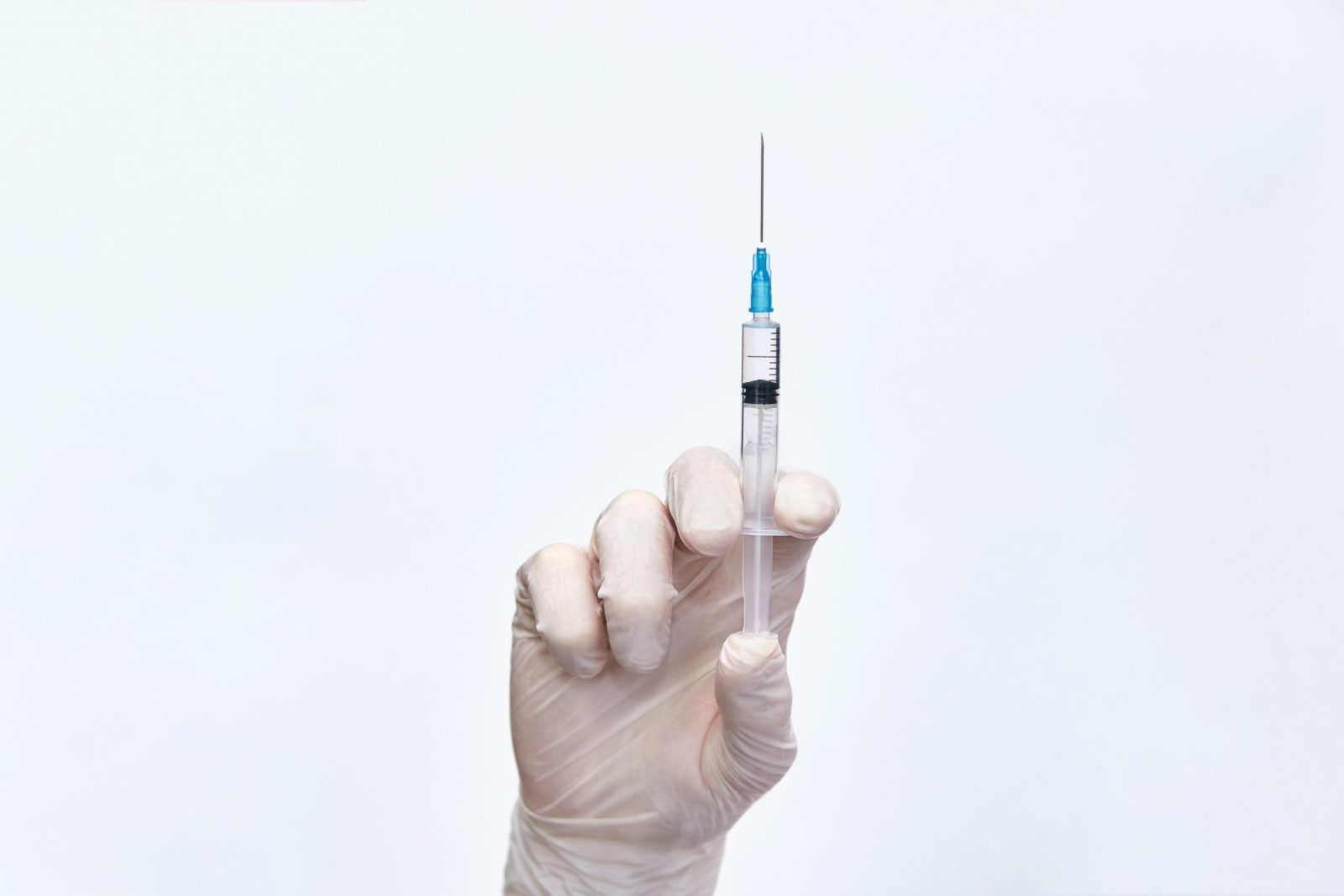 Photo Credit: Shutterstock
Photo Credit: Shutterstock
Are you experiencing facial volume loss or descent, hollowing around your eyes, loss of cheek volume, or sunken-in temples? These are all common signs of aging that can make an overall change in your face shape resulting in an aged, tired appearance. If this is the case, facial fat transfer is a minimally invasive procedure that has gained extreme popularity due to its similarities with a familiar treatment known as fillers.
Here Haute Beauty sat down with Haute Beauty expert Dr. Mark Albert to discuss all the details on facial fat transfer in similarity and comparison to fillers.
Haute Beauty: What is a facial fat transfer?
Dr. Mark Albert: Facial fat transfer, also known as facial fat grafting, is the process in which I liposuction a little bit of fat from somewhere on your body that has extra fat. I use a syringe to liposuction it out, process it and then inject it back into the face the same way as I would with filler. Essentially, facial fat transfer is filler but the idea is that it is a more permanent solution for the restoration of volume loss, rejuvenation and enhancement.
The procedure is done awake under local anesthesia. I also offer hand-held self-administered laughing gas if patients would like it.
HB: Are there any downsides to facial fat transfer?
MA: The only downside of the procedure is that it is not a completely “what you see is what you get" kind of procedure like filler. If I put in 10 CCs of fat, we know that we are going to lose somewhere around 3-4 CCs, so there is a component of overfilling. Everybody has different preferences; some prefer to not overfill and come back for an additional session if necessary.
HB: When you go to remove the fat from an area is there a certain area you look at first?
MA: The first place I go to is the lower abdomen and then if people do not have fat there, I would do the lower back/love handles. If there is none in either of those places, which occasionally happens, then I’ll go to the inner thighs. We can take fat from anywhere you’d like.
HB: How long does it take to settle into your face?
MA: You are swollen for only a few days and then at 3 months after surgery is when you will know what will stay with you for the long run.
HB: Is there any scarring involved?
MA: No scarring involved – I use a little needle to make openings in the skin.
 Photo Credit: Albert Plastic Surgery
Photo Credit: Albert Plastic Surgery
HB: Say a patient is unhappy or not satisfied with the results – can it be reversed?
MA: I find that in the first week or so if there are any areas of unevenness, they can successfully be massaged out. Beyond that, it becomes harder to reverse it and that is why you need to find someone willing to go extremely slow and be conservative. Fat removal is possible but very rarely necessary.
HB: Can anyone be a candidate?
MA: The beauty of the procedure is that it can be used for pretty much anyone. For someone who is 21 and wants their lips augmented we can use fat, someone who is 68 and just had a facelift, you can use fat to fill in under the eyes or areas of the face lift where they might be asymmetric. A lot of the time, facial fat transfer is paired with facelifts.
HB: Fillers and facial fat surgery have differences and similarities. Is there ever a time when someone would come in for a filler and you’d request facial fat transfer – vice versa?
MA: For people who do not want to have multiple injections over time it makes more sense to do a facial fat transfer. The other nice thing about fat is that you can do much higher volumes. It’s very rare for someone to come in and do 10 syringes of filler but you can certainly easily do 10 CCs of fat.
The times where fat is sometimes not ideal is for the under eyes because if you are too aggressive in the under eyes or tear troughs that is when bad things can happen – you can end up with visibility and lumpiness. The only time I do fat under the eyes is when people have an understanding that they may need multiple treatments. If they don’t want multiple fat grafting sessions, then filler would be a better, more reliable option for them.
HB: How many sessions does fat grafting require?
MA: For most areas, it is just one session. In the under eyes, it’s usually 2.
HB: Is facial fat surgery longer lasting than fillers?
MA: The fat that survives at three months is potentially with you for good. That is the big appeal of it.
 Photo Credit: Albert Plastic Surgery
Photo Credit: Albert Plastic Surgery
HB: Are there any risks?
MA: Asymmetry is a risk because sometimes it takes more on one side of the face than the other, however, this asymmetry is usually subtle and imperceptible. Just like any filler, there is always a chance of it occluding a blood vessel, but that is very uncommon.
HB: What does post-procedure care look like?
MA: I have people keep their heads elevated for the first three days after the procedure because that is when most of the swelling goes away. I ask people to avoid icing the area because it can affect the revascularization of the fat. Beyond a few days, there are no major restrictions.
HB: Is there anything else you’d like to cover?
MA: I try to make facial fat transfer similar to a filler experience. I had a patient who wanted filler in her tear troughs and on the spot, she decided she preferred fat grafting. We brought her right back to the procedure room and in 45 minutes she was done. The idea is you can go to lunch afterward, go to work on the following day – it’s easy.
At the end of the day, it is your tissue and some people do not love the idea of a foreign substance being injected into the face. Since it is your own fat, it feels slightly more natural in the lips or other places where you can easily feel filler. There are many benefits of using fat.
Explore your options for Facial Fat Transfer and Facial Fat Grafting in NYC by contacting Dr. Albert.






